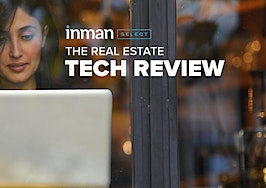- People use predictive analytics to understand customer behavior and make decisions.
- Traditional property data is being commoditized every day.
- Predictive analytics creates a whole new specialty for agents and brokers.
Predictive analytics might sound like a complicated term, but it’s simple to understand and helpful to different industries.
Predictive analytics is basically the science behind making smarter decisions by using statistical algorithms to analyze historical data to estimate future outcomes and trends. People use this data to predict and understand customer behavior, improve business performance and drive strategic decisions.
[Tweet “People use predictive analytics to understand customer behavior and make decisions.”]
One of the industries that more recently tapped into this emerging technology is real estate. Anyone looking for real estate can now predict the performance of a property and the market. This allows anyone to make intelligent decisions, no matter his or her role.
Investors are also able to decide and manage their investments more easily as futuristic data is available. Buyers, sellers and agents can use data analytics to update their methods, tools and skills to keep up with the industry.
Who uses it?
The use of predictive analytics has been beneficial to many industries including retail, financial services and healthcare. Organizations are increasingly relying on predictive analytics to increase their revenue, competitive advantage and problem-solving skills.
For example, the retail industry can improve customer relations using such data. How? A predictive model can show which customers have a high average order value but are unlikely to make another purchase in the next week. The retailer can target this customer and provide motivation to bring them back to the product.
This has opened up a channel for professionals to excel in their line of work and for novices to learn more about different industries.
For real estate, property analytics is now available on different sites, which can tell anyone a property’s potential value, home-value trends and other information based on a particular neighborhood or zip code.
The CEO and global president of Colliers International explained how data is affecting commercial real estate, “Traditional property data is being commoditized every day with data accessible and available to everyone. The value we provide to clients is delivering true market insights that are personalized to their specific industry, business and employees.”
[Tweet “Traditional property data is being commoditized every day.”]
Simplifying real estate
Predictive analytics has been valuable to real estate because it amplifies information to determine what resources are required for selling, buying or investing.
Those who have been hesitant about making real estate decisions can become at ease by looking at supportive data based on patterns, which is now accessible through various companies.
Investors can get real-time buy and sell recommendations based on past patterns, allowing them to select lucrative properties. Mashvisor is a website that provides real estate predictive analytics on listed properties to help investors make decisions about their investment strategies. (In full disclosure, I am the CEO and co-founder of Mashvisor.)
The analytics can tell the investor if a property would have a higher return by being leased in the traditional sense or by being rented out on Airbnb.
The data also includes estimated expenses, average monthly income and rental rates, cash-on-cash return, etc. The website gives reports about different cities as well, to summarize the performance of investment properties in particular cities.
Buyers and sellers can get projections of their income and expenses. Buyers can get an idea about a property’s expenses and what appreciation they can expect.
[Tweet “Buyers can get an idea about a property’s expenses and appreciation.”]
Sellers can also use customer behavior analysis to help them understand buyers’ needs and actions. For those who own multiple properties, Rentlytics is a platform that simplifies multi-family property ownership and management companies by providing information and insight for their portfolios.
The platform combines all the properties in a portfolio and the systems within in, consolidating everything into one place and collaborates with outside partners. Consumers can look at all information simultaneously and answer questions from any level, identify trends and predict outcomes.
Finding the right location is a priority for anyone involved in real estate. Alteryx is a software company that helps investors and companies locate the best locations for their properties. The company blends data and uses it for advanced data analytics.
Alteryx Server is one of their products that makes sharing analytics easier and allows users to customize the output to their needs. Everything becomes deployed on the organization’s server infrastructure.
What this means for agents, Realtors and brokers
This data might give a short-term benefit for those looking for optimal properties but what about the long-term benefit? This type of data creates a whole new specialty for agents and brokers.
[Tweet “Predictive analytics creates a whole new specialty for agents and brokers.”]
If there is an opportunity to accommodate the client better with actual data, shouldn’t the use of predictive analytics become the new trend?
Contrary to the belief that data diminishes the need for agents, it creates a chance for such professionals to simplify their work by allowing the data to indicate if a property is suitable for a client.
Consequently, the client perceives the agent’s feedback as more sophisticated because it is backed with numbers and patterns.
Let’s look at an example
An investor is looking to buy a property and is concerned about vacancies. An agent or broker can look at data from Mashvisor, which shows how the number of bedrooms or bathrooms will correlate with occupancy rates and guide the investor to pick a property based on the number of bedrooms. “By having one additional bedroom, occupancy rates go up by X,” is a cogent statement to clients.
With big data, real estate companies have already been able to serve their clients better. “By applying predictive models to data, an organization can uncover behavioral patterns and develop models to guide targeted interactions and ultimately achieve overall operational effectiveness and higher marketing return on investment,” Ted Loring, chair of NAR’s Data Strategies Committee said.
Organizations use predictive analytics to learn about their agents’ performances and their clients because after big data sites are used in searching for properties, an agent will still be needed to know the ins and outs of certain areas.
The ultimate objective of using predictive analytics is to make the best decisions possible based on quality data. The real estate industry is fortunate to be able to take advantage of such technology and information now.
Gaining acumen to make decisions in one of the largest industries in the world is not only helpful but crucial because of the never-ending demand for properties.
[Tweet “The objective of predictive analytics is to make the best decisions based on quality data.”]
Peter Abualzolof is the co-founder and CEO of Mashvisor. Follow Mashvisor on Twitter or LinkedIn.




